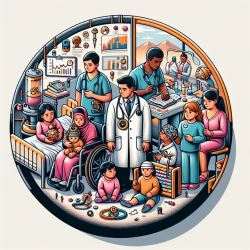Introduction
Integrative medicine is a holistic approach that combines conventional medical treatments with complementary therapies to address the physical, emotional, and spiritual needs of patients. In pediatric palliative care, this approach is particularly beneficial as it empowers patients and families, allowing them to regain a sense of control over their health and well-being.
Understanding Integrative Medicine
Integrative medicine focuses on healing the whole person by considering lifestyle, environment, and emotional factors. It emphasizes the therapeutic relationship between practitioner and patient and utilizes all appropriate therapies informed by evidence. This approach contrasts with complementary and alternative medicine (CAM), which often operates outside conventional medical practices.
Trends in Integrative Medicine
There is a growing interest in integrative medicine among patients and healthcare providers. Fellowships and conferences are providing evidence-based knowledge and tools for practice. The National Institutes of Health’s survey highlights that a significant portion of the population uses complementary health approaches, with pain being a primary reason for seeking such therapies.
Integrative Medicine Modalities
Practitioners can offer a variety of integrative modalities, including:
- Acupuncture/Acupressure: Used for managing symptoms like pain and nausea, acupuncture is safe for children when performed by qualified professionals.
- Relaxation Techniques: Practices like meditation, yoga, and tai chi activate the parasympathetic nervous system, improving well-being and reducing stress.
- Essential Oils: Aromatherapy uses potent plant extracts for therapeutic purposes, offering benefits in symptom management.
- Botanicals and Supplements: These can improve symptoms and provide a sense of self-management, but practitioners must be aware of potential interactions.
- Reiki: An ancient healing art that connects universal life-force energy with the patient’s innate healing power.
Case Illustration
Consider the case of Janey, a 16-year-old with angiosarcoma. Integrative medicine helped her manage anxiety and pain, allowing her to maintain a sense of normalcy and control over her life. Techniques like guided imagery, aromatherapy, and biofeedback were crucial in her care, illustrating the power of integrative approaches.
Conclusion
Integrative medicine offers a multimodal approach that enhances the quality of life for pediatric palliative care patients. By combining conventional treatments with complementary therapies, practitioners can empower patients and their families, providing holistic care that addresses all aspects of health.
To read the original research paper, please follow this link: Integrative Approaches in Pediatric Palliative Care.










